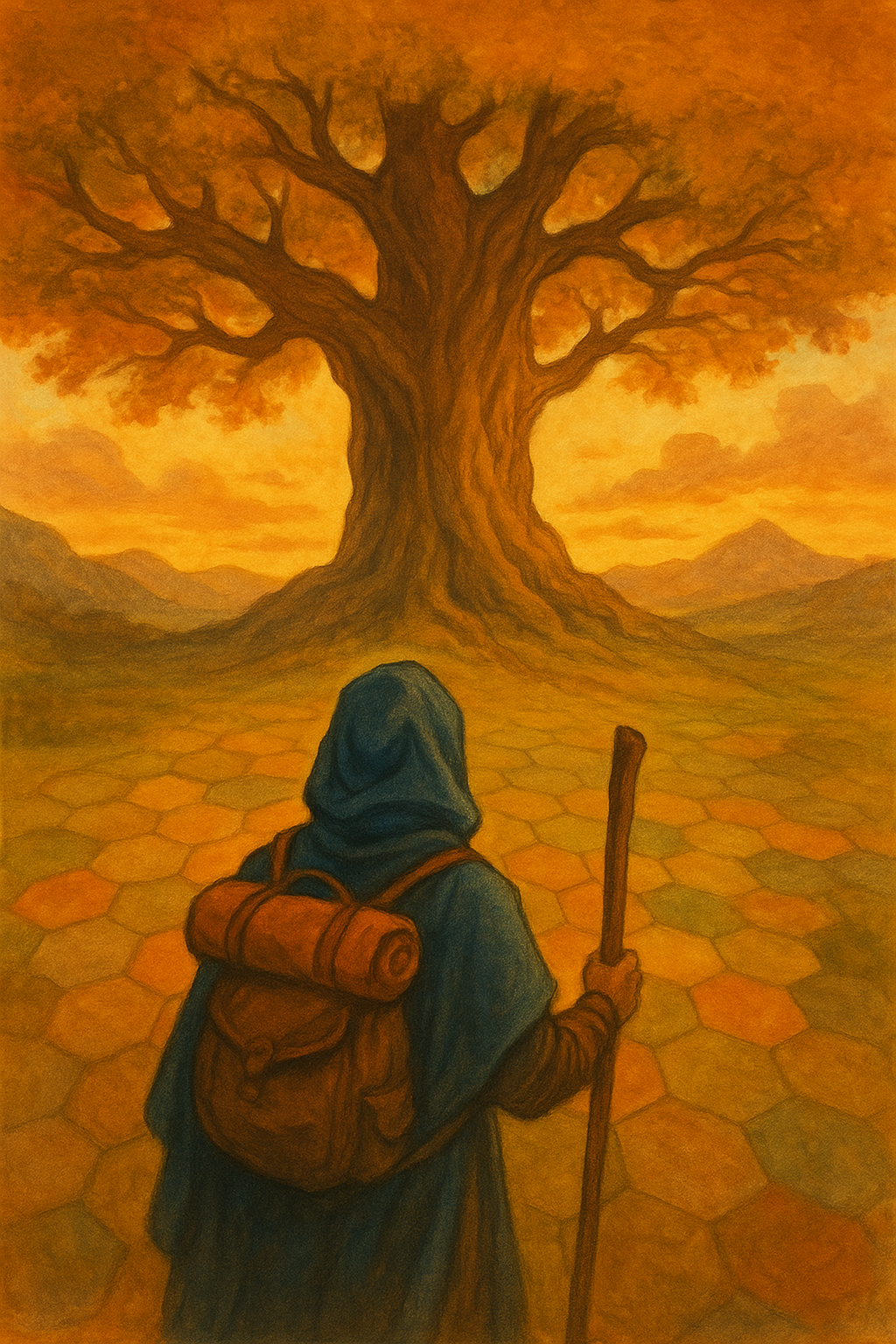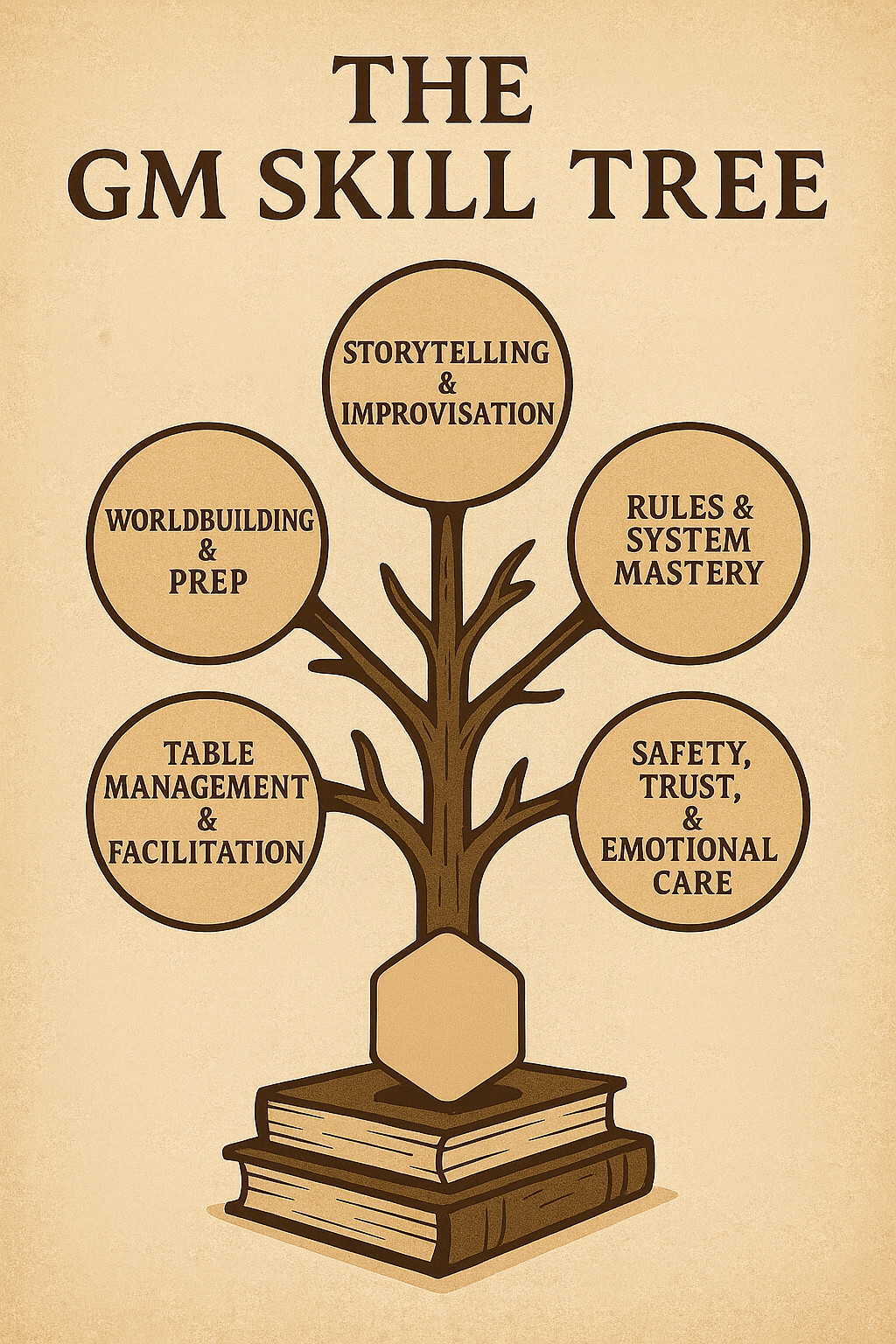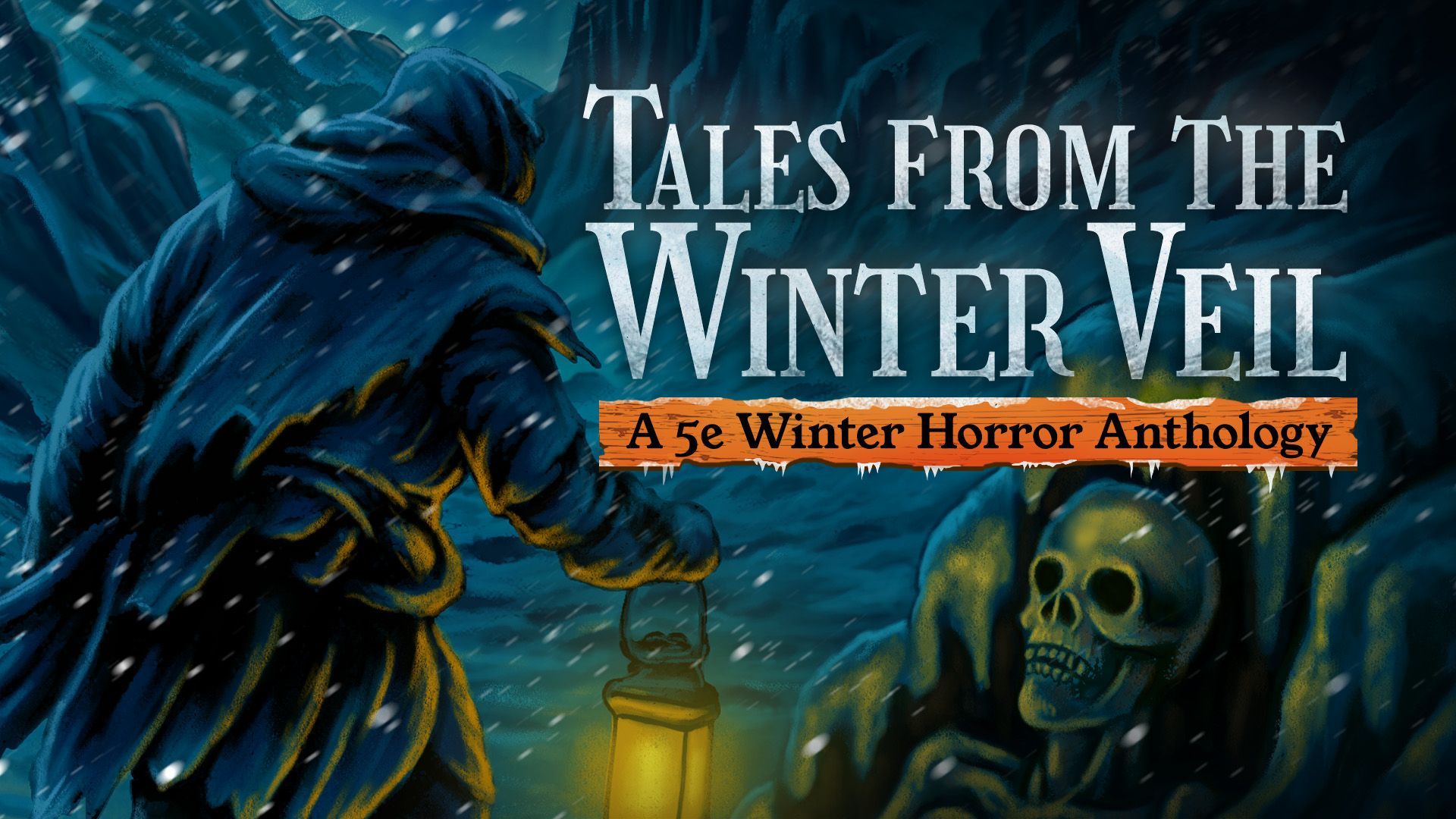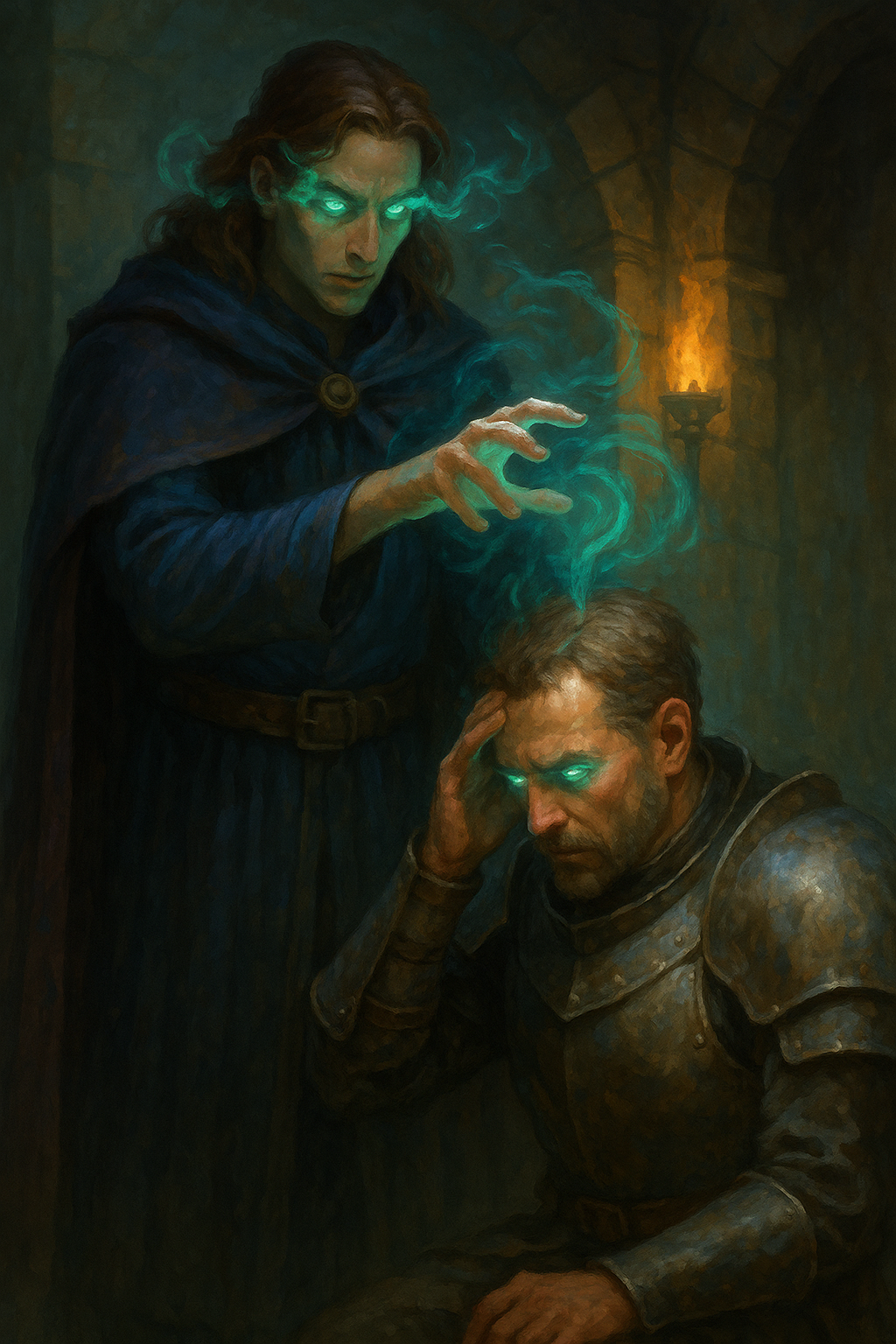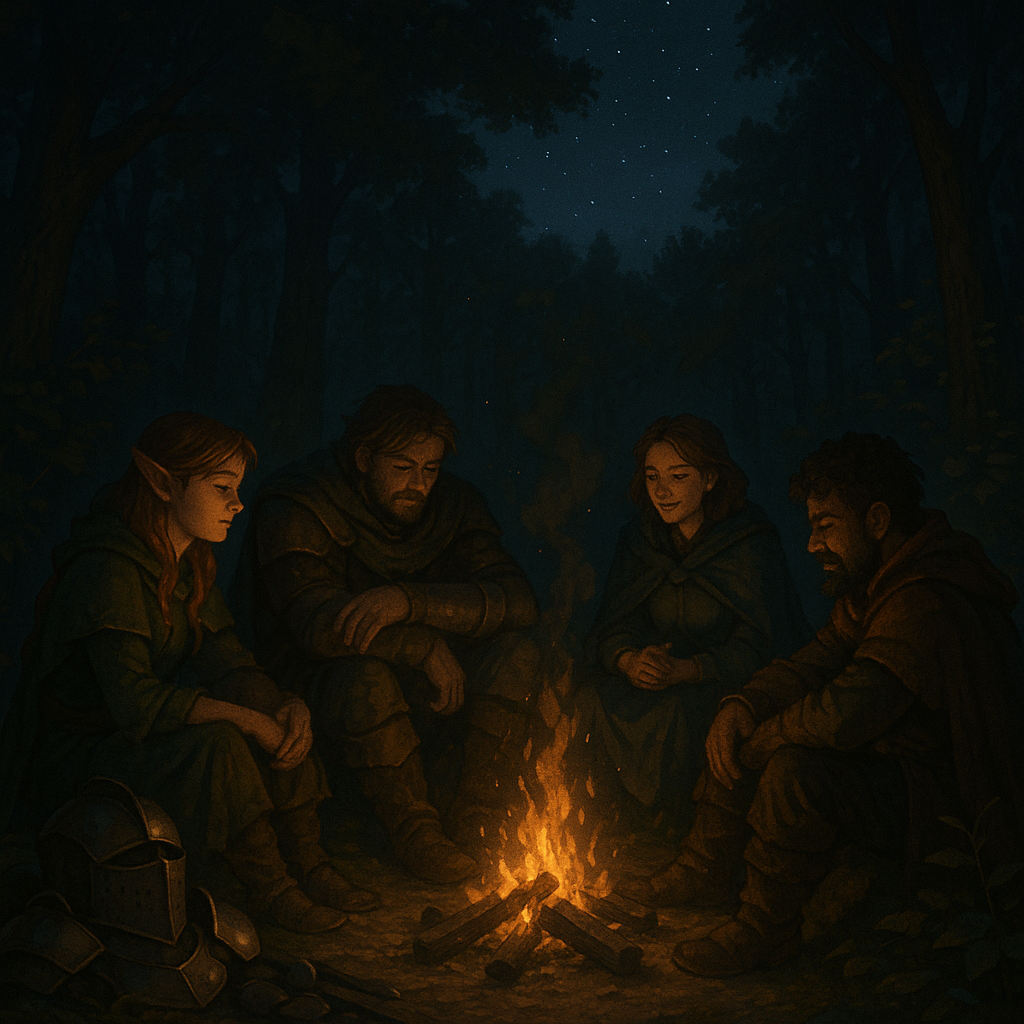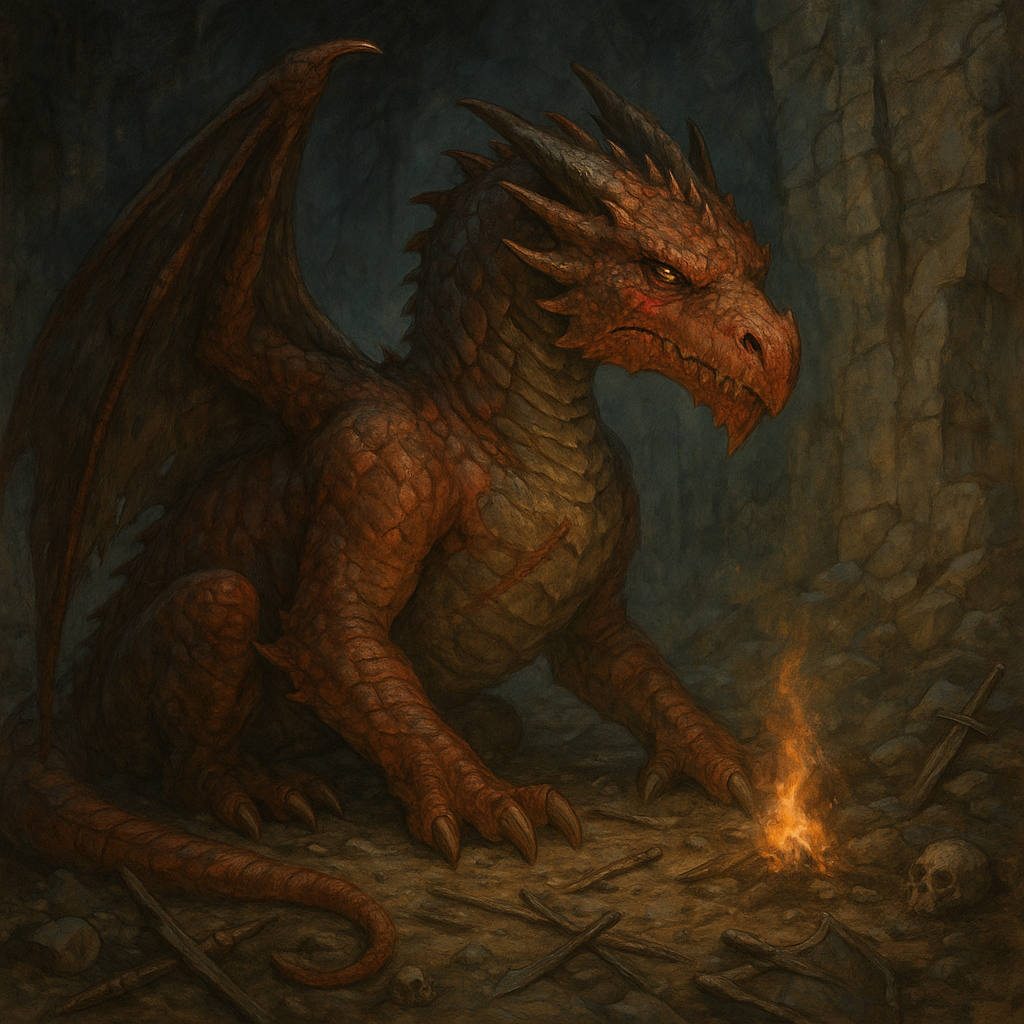From Tabletop to Terrain: Using Your 3D Game Tables to Elevate Emotional Beats
Terrain as a roleplaying tool
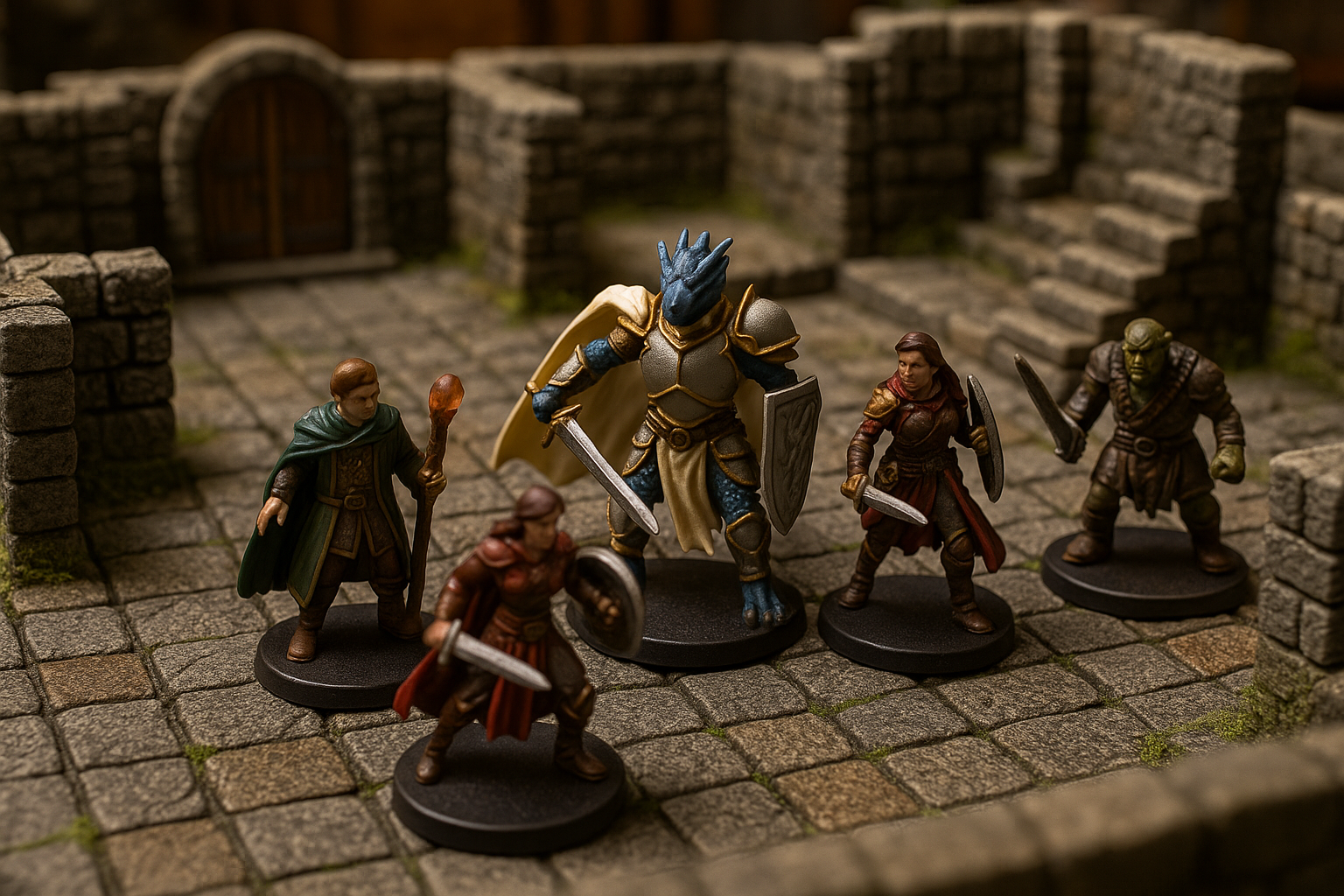
Dear Readers,
When I was just a teenager, hunched over a folding card table with a faded Chessex battle mat and a pile of mismatched dice, I could only dream of the tables I have now: tables with built-in terrain panels, recessed zones for miniatures, lighting elements, and the kind of craftsmanship that turns a game into an experience.
Back then, my world was imagined. My orcs were pennies. My fireballs were Post-it notes. But it worked because we believed. The magic of tabletop roleplaying games has never required luxury or perfection. It only asks for imagination and shared space.
But oh, how powerful that space can become when the table itself becomes a storytelling tool.
Today’s post isn’t just about how to make your game table look cool. It’s not a product pitch. It’s about something deeper: how your 3D terrain, table design, and physical space can reinforce the emotional rhythm of your stories. It's about using physical elements to echo dramatic beats, amplify immersion, and help players feel what's happening, not just describe it.
If you’ve ever wondered how your game setup can elevate your narrative—not just tactically but emotionally, then this one’s for you.
So pull up a chair. Let’s talk about terrain, tension, and the sacred geometry of the game table.
Chapter One: Why Terrain Isn’t Just Tactical
Let’s start by addressing a common misconception: that terrain is primarily a tool for combat. That it exists to help players measure line of sight, plot movement, or resolve flanking bonuses.
But that view is incomplete.
Terrain is a visual language and language is how we tell stories:
A broken bridge isn't just an obstacle, instead it’s a metaphor for lost connection.
A field of burning trees isn’t just cover, it’s a symbol of devastation.
An elevated dais in a villain’s throne room isn’t just line of sight, it’s emotional framing. It tells your players how to feel before a single word is spoken.
Think about film. Directors use lighting, color, and camera angles to shape emotion. We, as Dungeon Masters, don’t have cameras—but we have terrain. We have design.
We have intentional space.
And with the rise of customizable 3D-printed tables, modular terrain sets, and LED-lit display zones, we can now curate emotional landscapes—not just battlefields.
Chapter Two: The Psychology of Space at the Table
If you’ve run enough games, you know that players respond not just to what you say—but to what they see. Humans are visual, tactile creatures. We’re wired to associate shapes, textures, and arrangements with meaning.
Here are a few ways space shapes perception:
- Open spaces suggest possibility, vulnerability, or exposure.
- Tight, confined spaces evoke tension, claustrophobia, or intimacy.
- Vertical spaces (elevated platforms, staircases, balconies) suggest power, dominance, or observation.
- Asymmetrical designs create disorientation or imbalance.
- Symmetry and circular designs often convey ritual, order, or fate.
So if you're building a custom 3D table, or setting up a modular terrain layout, ask yourself:
- What do I want my players to feel in this scene?
- How can I make the physical space reflect that feeling?
Emotionally resonant terrain isn't about flashy detail. It's about alignment between narrative and visual form.
Chapter Three: Emotional Terrain Archetypes
Let’s explore some specific terrain “archetypes” and what emotional beats they can heighten.
1. The Narrow Path – Fear, Tension, Vulnerability
Use It When:
- Your players are being hunted
- They’re traveling through morally gray decisions
- You want them to feel watched or trapped
Design Tips:
- Create a single-file canyon, hallway, bridge, or tunnel
- Add natural “cover” for enemies, but no escape for the players
- Dim lighting or use shadowed terrain pieces
- Incorporate precarious elevation or unstable footing
Narrative Payoff:
When the encounter happens, your players are already keyed up. They know there's no room to run. You've already created suspense before initiative is rolled.
2. The Grand Hall – Awe, Revelation, Importance
Use It When:
- The party meets a king, archmage, or god
- A revelation or world-shaking prophecy is revealed
- You want the players to feel small
Design Tips:
- Use raised platforms or columns
- Introduce light sources embedded in the terrain
- Use vertical height with stairs or balconies
- Add symmetrical placement to imply order or divine power
Narrative Payoff:
Even if the party "wins" a social encounter, the setting reinforces that this moment matters. It signals: this is not just another tavern scene.
3. The Broken Battlefield – Regret, Consequence, Guilt
Use It When:
- The party returns to a site they failed to save
- They face the aftermath of a past choice
- A war-torn area reflects emotional wounds
Design Tips:
- Scatter broken weapons and shattered statues
- Use scorched or desecrated terrain pieces
- Build ruins that mirror a once-peaceful place the players recognize
- Don’t clear the table between sessions—show the passage of time with degradation
Narrative Payoff:
This is your "Empire Strikes Back" moment. Let the terrain tell the story of failure and the cost of heroism. Let it haunt them.
4. The Spiral or Circle – Destiny, Ritual, Unity or Doom
Use It When:
- A major ritual is occurring
- The players are trapped in a divine or infernal cycle
- You want to hint at prophecy or fate
Design Tips:
- Create concentric rings of terrain
- Build a dais or portal at the center
- Place miniatures in symmetrical formation
- Use runes or glowing effects (LEDs, UV-reactive materials)
Narrative Payoff:
The visual symmetry will immediately tell your players: this moment is more than mortal. It’s timeless. Inevitable. Sacred—or cursed.
5. The Cramped Den – Intimacy, Vulnerability, Revelation
Use It When:
- A PC reconnects with a family member
- A secret meeting occurs
- You want to slow the pace and focus on character interaction
Design Tips:
- Use small furniture, close walls, and cozy lighting
- Add mundane objects—dishes, books, rugs
- Keep everything “scaled down” to make it feel personal
Narrative Payoff:
You don’t need dragons here. You need room to feel. Terrain can whisper just as well as it roars. And when a player roleplays a tearful reunion inside a handmade cottage? That’s terrain magic.
Chapter Four: Lighting as Emotional Amplifier
One of the most overlooked components of physical terrain storytelling is light.
Modern 3D tables can incorporate:
- LED strip lighting
- Recessed color-change lamps
- Hidden underglow panels
- Dynamic projection or “smoke box” effects
Here’s how lighting can elevate emotional beats:
Lighting Color Emotional Impact
Warm amber Comfort, nostalgia
Cool blue Mystery, melancholy
Red/orange Danger, chaos
Green Enchantment, sickness
Purple Magic, otherworldly
Flickering Uncertainty, tension
Combine this with your terrain themes. A broken cathedral lit in warm gold says “there’s hope yet.” The same cathedral lit in red says “the gods are angry.”
Pro tip: change the lighting mid-session to reflect an emotional shift—reveal, betrayal, triumph.
That moment when the table glows purple as the villain ascends the ritual steps?
Chef’s kiss.
Chapter Five: Player Perspective and Table Arrangement
The physical shape of your table affects immersion and focus.
Here are a few setups and how they impact emotional beats:
1. The Stage Model (DM at one end)
- Best for dramatic monologues, reveals, or strong DM presence
- Signals a "centralized" authority: great for cinematic storytelling
2. The Round Table
- Promotes collaboration and equality
- Great for emotionally vulnerable scenes or character-driven arcs
3. The Modular Pod
- Players cluster in smaller groups on different sides
- Use for split-the-party scenes or faction conflict arcs
If your 3D table allows for shifting modules or foldout terrain zones, use that! You can rearrange your table between acts to reinforce story evolution.
Imagine Act I starting in a tight pod—intimate, collaborative—and Act III taking place across a massive, stretched table with high terrain and distant positions. Physical distance echoes narrative tension.
Chapter Six: The Power of Touch and Texture
While miniatures and maps appeal to the eyes, terrain is also tactile. It invites interaction.
A few ways to incorporate texture into emotion:
- Rough terrain for harsh, unforgiving landscapes (stone, bone, rubble)
- Soft felt or cloth for comforting homes or dreams
- Metallic or reflective pieces for alien or divine encounters
- Sand, moss, or grit for decay, wilderness, or ancient ruins
Even better: invite players to touch the terrain with purpose.
- Let them move torches around a dungeon
- Let them pick up cursed relics or keys
- Let them turn miniature levers that actually open terrain doors
These physical interactions make the moment stick.
And when that texture aligns with the scene’s emotion? They’ll remember it long after the session ends.
Chapter Seven: Terrain as Memory and Foreshadowing
Want to blow your players’ minds?
Use terrain across time.
Let me explain.
1. Terrain as Memory
- Reuse the same terrain piece from a previous session—but change it.
- Show the same room 20 years later. Now it’s burned. Or overgrown.
- Keep a “permanent” piece on your table that changes between arcs (like a slowly crumbling statue)
This builds continuity. Players will feel the passage of time. It adds weight to choices and nostalgia to victories.
2. Terrain as Foreshadowing
- Introduce pieces that “don’t matter yet”—a strange altar, a sealed door.
- Weeks later, when those elements become relevant, players will remember.
One of the best compliments I ever received was: “Wait... was that ritual circle always in the temple?” (It was.)
That’s terrain storytelling.
Chapter Eight: Accessibility, Inclusion, and Player Experience
While terrain is powerful, we must also use it responsibly.
Here are a few DMing tips:
1. Vision and Visibility
- Ensure players with low vision or color blindness can read terrain clearly
- Use contrasting colors, textures, or raised borders
2. Physical Access
- Make sure your table height works for everyone—including those using mobility aids
- If space is tight, use camera setups and projectors so everyone has a “seat at the table” visually
3. Sensory Overload
- Not every player wants flashing lights and sound effects
- Allow players to opt out or dim effects if needed
4. Choice Over Spectacle
- Don’t let terrain dictate the scene at the cost of player agency
- The terrain should enhance their choices—not railroad them
The most beautiful table in the world means nothing if the players feel left out.
Chapter Nine: Bringing It All Together – A Case Study
Let me walk you through a session I ran last year using everything we’ve talked about.
The Scene: "The Ashes of Calverin"
The party returns to a village they failed to protect. Months ago, they’d promised to defend it—but were too late. Now they return to ashes, bones, and silence.
Terrain Setup:
- A burned village layout, with broken houses and skeletal trees
- One partially intact church, with a collapsed steeple
- Ash scattered on a black velvet cloth (to mimic scorched earth)
- A fountain where they once drank wine with NPCs, now dry and cracked
Lighting:
- Warm amber as they approached the village
- As they entered: the lights shifted to cold blue
- When the BBEG appeared, hidden in the church ruins: flickering red began from within
Emotional Impact:
One player walked to the fountain, picked up a miniature wine bottle from months ago (yes, I kept it), and just said:
“She used to sing here.”
And then she cried.
Not because of hit points. Because of place. Because the table remembered what the players forgot.
That’s the power of terrain.
Chapter Ten: Practical Tips for Dungeon Masters
Before we wrap, here are some rapid-fire tips to make emotional terrain storytelling work for you:
1. Don’t Overbuild
- You don’t need 100% terrain coverage. Focus on impact zones.
2. Use What You Have
- Books as mountains. Yarn as rivers. Scarves as fog. Emotion doesn’t require resin.
3. Rehearse Lighting and Reveal Cues
- Practice switching lights, opening trap doors, or revealing pieces before game night
4. Involve Players in Setup
- Ask players to help arrange terrain at the start—it builds investment
5. Narrate What’s Not on the Table
- Use physical space to anchor imagination, but let words complete the picture
Chapter Eleven: Your Table is a Ministry of Story
If you’ve followed my posts before, you know I believe deeply in the spiritual power of the table—not in a dogmatic sense, but in the way stories connect us, heal us, and invite us to be more.
Using terrain well is not about showing off.
It’s about creating space—literal and metaphorical—for transformation.
It’s about taking the sacred act of play and honoring it with craft.
When you take time to build terrain that mirrors emotion, when you align form with feeling, when you invite players not just to imagine but to experience—you are doing something rare.
You are guiding an adventure.
You are curating memory.
You are inviting your players to touch the divine—through foam, wood, LEDs, and love.
So build well, Dungeon Masters.
Build beautifully.
Build bravely.
And may your terrain always echo the hearts of your heroes.
Until next time, Dear Readers...
















